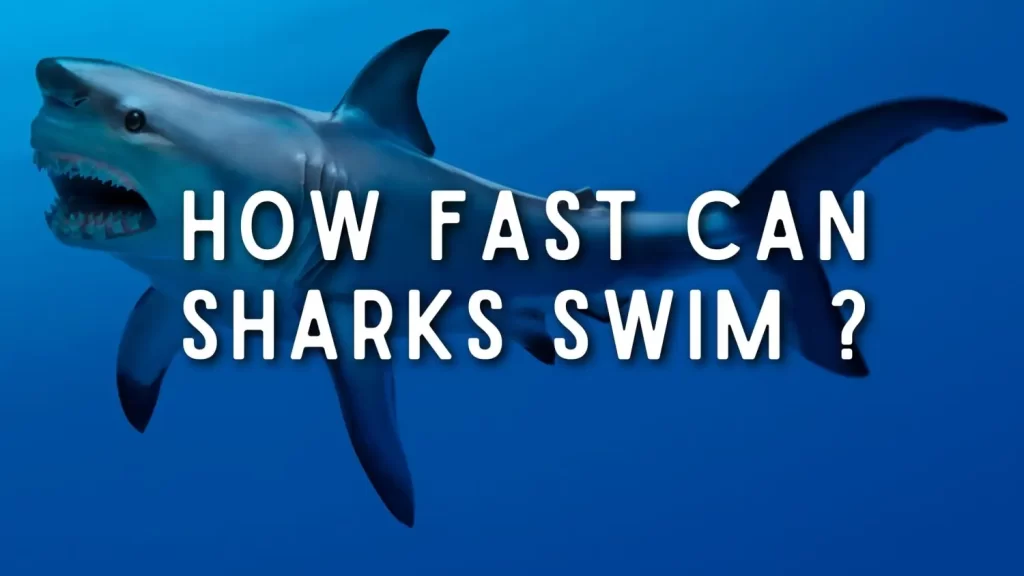How Fast Can a Shark Swim? A Comprehensive Guide
Sharks are some of the most fascinating creatures in the ocean, known for their speed, agility, and predatory skills. Understanding how fast sharks can swim is crucial for appreciating their role in marine ecosystems and for those interested in marine biology, fishing, or conservation. This article will explore the swimming speeds of various shark species, factors that influence their speed, and comparisons to other marine animals.
Introduction to Shark Swimming Speeds
Sharks are built for speed, with streamlined bodies and powerful muscles that allow them to move swiftly through the water. Their swimming speeds can vary significantly depending on the species, size, and environmental conditions.
Average Swimming Speeds
On average, sharks swim at speeds of about 1.5 to 5 mph (2.4 to 8 km/h) when cruising. However, when hunting or feeling threatened, many species can reach much higher speeds, often exceeding 20 mph (32 km/h).
Fastest Shark Species
Some shark species are particularly known for their impressive speeds:
- Mako Shark (Isurus spp.): Known as the fastest shark, the shortfin mako can reach speeds of up to 45 mph (72 km/h).
- Great White Shark (Carcharodon carcharias): This apex predator can swim at speeds of 25 mph (40 km/h).
- Tiger Shark (Galeocerdo cuvier): Capable of reaching speeds of 20 mph (32 km/h).
- Bull Shark (Carcharhinus leucas): Also known to swim at speeds of 25 mph (40 km/h).
Factors Influencing Shark Speed
Several factors can influence how fast a shark can swim:
1. Species
Different shark species have evolved various adaptations that affect their swimming speed. For example, the streamlined body of the mako shark allows it to swim faster than the bulkier whale shark.
2. Size
Generally, smaller sharks tend to be faster than larger sharks. For instance, juvenile sharks often exhibit greater agility and speed compared to their adult counterparts.
3. Age and Health
Younger and healthier sharks are typically faster than older or injured sharks. Health issues can significantly affect a shark’s ability to swim efficiently.
4. Environmental Conditions
Water temperature, salinity, and current can all impact a shark’s swimming speed. Warmer waters can enhance metabolic rates, potentially increasing speed.
5. Hunting Behavior
Sharks often increase their speed when hunting. The element of surprise is crucial for their hunting strategy, and a sudden burst of speed can help them catch prey.
Swimming Techniques of Sharks
Sharks employ various swimming techniques that contribute to their speed and agility:
1. Tail Propulsion
Sharks primarily use their tails (caudal fins) to propel themselves through the water. The powerful strokes of their tails allow them to generate significant thrust.
2. Streamlined Body Shape
The streamlined shape of a shark reduces drag as it moves through the water, allowing for faster swimming. This adaptation is crucial for both hunting and escaping predators.
3. Buoyancy Control
Sharks have a unique adaptation known as a liver filled with oil, which helps them maintain buoyancy. This adaptation allows them to conserve energy while swimming.
Comparison of Shark Speeds to Other Marine Animals
Sharks are not the only fast swimmers in the ocean. Here’s how they compare to other marine animals:
| Animal | Speed (mph) | Speed (km/h) |
|---|---|---|
| Shortfin Mako Shark | 45 | 72 |
| Great White Shark | 25 | 40 |
| Tiger Shark | 20 | 32 |
| Bull Shark | 25 | 40 |
| Sailfish | 68 | 110 |
| Yellowfin Tuna | 50 | 80 |
| Swordfish | 60 | 97 |
| Orca (Killer Whale) | 34 | 55 |
| Common Dolphin | 60 | 97 |
Observations
- Sailfish and swordfish are among the fastest swimmers in the ocean, surpassing the speeds of most shark species.
- Sharks like the mako and great white are incredibly fast for their size, making them formidable predators.
The Role of Speed in Shark Behavior
Shark speed plays a crucial role in various aspects of their behavior:
1. Hunting
Speed is vital for sharks when hunting prey. Their ability to accelerate quickly allows them to ambush fish and other marine animals effectively. Many sharks employ a strategy of stealth and speed, often swimming slowly until they are close to their target before launching a rapid attack.
2. Migration
Many shark species are migratory, traveling long distances in search of food or breeding grounds. Their swimming speed allows them to cover vast areas of the ocean, adapting to seasonal changes in prey availability.
3. Avoiding Predators
While adult sharks have few natural predators, young sharks must be cautious of larger species. Speed can help them evade threats and survive in their early years.
Conservation and the Future of Sharks
Sharks face numerous threats, including overfishing, habitat loss, and climate change. Understanding their swimming abilities and behaviors is essential for effective conservation efforts.
1. Overfishing
Many shark species are targeted for their fins, meat, and oil. Overfishing can lead to population declines, affecting the balance of marine ecosystems.
2. Habitat Loss
Coastal development and pollution can degrade shark habitats, impacting their ability to hunt and reproduce.
3. Climate Change
Rising ocean temperatures and changing currents can affect shark migration patterns and prey availability.
Conclusion
Sharks are remarkable creatures with impressive swimming abilities. Understanding how fast they can swim and the factors influencing their speed provides valuable insights into their behavior and ecology. As apex predators, sharks play a crucial role in maintaining the health of marine ecosystems. Protecting these magnificent animals is vital for the future of our oceans.
Frequently Asked Questions (FAQs)
1. How fast can sharks swim?
Sharks can swim at speeds ranging from 1.5 mph (2.4 km/h) to 45 mph (72 km/h), depending on the species and circumstances.
2. Which shark is the fastest?
The shortfin mako shark is considered the fastest shark, capable of reaching speeds of up to 45 mph (72 km/h).
3. Do all sharks swim at the same speed?
No, swimming speeds vary significantly among shark species. Factors such as size, age, and environmental conditions influence their speed.
4. How do sharks swim?
Sharks primarily use their tails for propulsion and have streamlined bodies to reduce drag in the water.
5. Can sharks swim fast for long distances?
Sharks can swim quickly for short bursts, but they typically swim at slower speeds for longer distances.
6. What role does speed play in shark hunting?
Speed is crucial for sharks when hunting prey, allowing them to ambush and catch fish effectively.
7. Are sharks endangered?
Many shark species are threatened or endangered due to overfishing, habitat loss, and climate change.
8. How do sharks adapt to their environment?
Sharks have various adaptations, including buoyancy control and streamlined bodies, that help them thrive in their marine environments.
9. How do scientists measure shark speed?
Shark speed is often measured using tagging and tracking methods, as well as observations of their movements in the wild.
10. Why are sharks important to the ocean ecosystem?
As apex predators, sharks help maintain the balance of marine ecosystems by controlling the populations of other species.
Table: Swimming Speeds of Various Shark Species
| Shark Species | Speed (mph) | Speed (km/h) |
|---|---|---|
| Shortfin Mako | 45 | 72 |
| Great White Shark | 25 | 40 |
| Tiger Shark | 20 | 32 |
| Bull Shark | 25 | 40 |
| Hammerhead Shark | 20 | 32 |
| Nurse Shark | 5 | 8 |
| Whale Shark | 3 | 5 |
For more information on sharks and their swimming capabilities, you can visit the Wikipedia page on Sharks. This comprehensive article provides insights into how fast sharks can swim and the factors influencing their speed.



